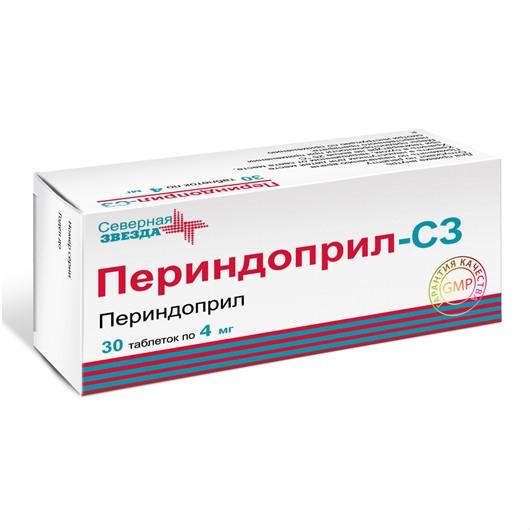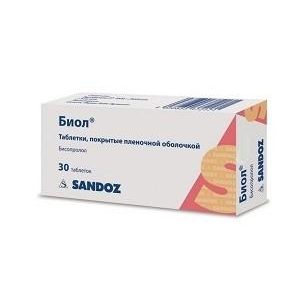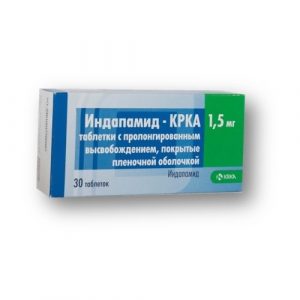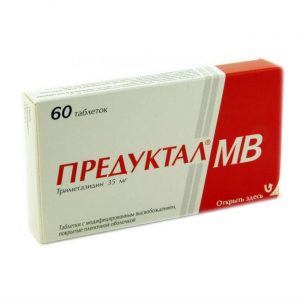Description
Release form
Tablets.
Packing
30 pcs
Indications
Arterial hypertension.
Chronic heart failure.
Contraindications
Hypersensitivity to perindopril and other components of the drug or other ACE inhibitors, history of angioedema in the background, therapy with inhibitors. ACE, hereditary or idiopathic angioedema, pregnancy, lactation, age under 18 years (efficacy and safety have not been established).
Precautions: Aortic valve stenosis, hypertrophic obstructive cardiomyopathy, cerebrovascular diseases (including cerebrovascular insufficiency, coronary heart disease, coronary insufficiency – the risk of developing an excessive decrease in blood pressure and concomitant ischemia). Severe autoimmune systemic diseases of the connective tissue (including systemic lupus erythematosus, scleroderma), inhibition of bone marrow hematopoiesis while taking immunosuppressants (increasing the likelihood of developing neutropenia). Renovascular hypertension, bilateral renal artery stenosis, single kidney artery stenosis, condition after kidney transplantation (risk of impaired renal function and agranulocytosis), chronic renal failure (especially accompanied by hyperkalemia), hyperkalemia, diet with sodium restriction, conditions, accompanied by a decrease in the volume of circulating blood (including diarrhea, vomiting, taking diuretics), diabetes mellitus, advanced age, surgical intervention (general anesthesia).
Special instructions
The risk of developing arterial hypotension and / or renal failure while taking the drug increases with a significant loss of sodium and water (a strict salt-free diet, and / or intake diuretics, diarrhea, vomiting) or stenosis of the renal arteries (blockade in these situations of the renin-angiotensin system can lead, especially when first taking the drug and for the first 2 weeks to lay down erya, to a sudden decrease in blood pressure and the development of chronic renal failure). Before starting and during therapy, it is recommended to determine the concentration of creatinine, electrolytes and urea (within 1 month). In patients with arterial hypertension, already receiving diuretic therapy, it is necessary to stop taking them (3 days before the start of the appointment of Perindopril) and, if necessary, add it to the treatment again later. In patients with chronic heart failure receiving diuretic therapy, if possible, their dose should also be reduced a few days before starting treatment. In patients at risk, especially with chronic heart failure in the decompensation stage, elderly patients, as well as patients with initially low blood pressure, impaired renal function or receiving large doses of diuretics, the use of the drug should be controlled. In patients on hemodialysis, the use of polyacrylonitrile membranes should be avoided (anaphylactoid reactions may develop). It is necessary to stop taking before the upcoming surgical treatment for 12 hours and to warn the anesthetist about taking the drug.
Influence on the ability to drive a car and perform work requiring increased attention.
Due to the risk of developing arterial hypotension and dizziness, ACE inhibitors should be prescribed with caution to persons driving vehicles and engaging in activities that require increased attention and rapid motor response.
Composition
1 tablet contains the active substance: perindopril erbumin 4 mg.
Excipients: lactose (milk sugar) cellulose microcrystalline croscarmellose sodium (primellose) silicon dioxide colloidal (aerosil) magnesium stearate.
Description: Tablets are white or almost white, round, flat-cylindrical with a bevel.
Dosage and administration
Inside, in the morning, before meals. The initial dose for the treatment of hypertension is 4 mg / day, if necessary (after 1 month) the dose can be increased to 8 mg / day in one dose. When prescribing ACE inhibitors to patients receiving diuretic therapy, a sharp decrease in blood pressure may be noted, for the prevention of which it is recommended to stop taking diuretics 2-3 days before the expected initiation of therapy with Perindopril or to prescribe a drug in lower doses – 2 mg once a day.
In patients with renovascular hypertension, the initial dose is 2 mg 1 time per day. If necessary, the subsequent dose may be increased.
In elderly patients, therapy should be started with a dose of 2 mg per day, and then, if necessary, gradually increase it up to a maximum dose of 8 mg per day.
The treatment of patients with heart failure in combination with a non-potassium-sparing diuretic and / or digoxin, it is recommended to start under close medical supervision, appoint Perindopril in an initial dose of 2 mg once a day, in the morning. In the future, after 1-2 weeks of therapy, the dose of the drug can be increased to 4 mg once a day.
In patients with impaired renal function, the dose of the drug should be selected taking into account the degree of renal failure: depending on the clearance of creatinine (CC). With CC 30-60 ml / min – 2 mg once a day with CC 15-30 ml / min – 2 mg every other day for patients on hemodialysis (CC less than 15 ml / min) – 2 mg per day of dialysis. With CC more than 60 ml / min 4 mg per day. Patients with impaired liver function, changes in the dose of Perindopril is not required.
Side effects
– From the cardiovascular system: often – excessive decrease in blood pressure and related symptoms, rarely – arrhythmia, angina pectoris, myocardial infarction and stroke.
– From the urinary system: decreased renal function, acute renal failure.
– On the part of the respiratory system: often – dry cough, difficulty breathing rarely – bronchospasm, rhinorrhea.
– From the digestive system: often – nausea, vomiting, abdominal pain, taste change, diarrhea or constipation, dry mouth, decreased appetite, cholestatic jaundice, pancreatitis, intestinal edema.
– From the central nervous system: often – headache, asthenia, increased fatigue, dizziness, tinnitus, visual impairment, muscle cramps, paresthesia rarely – decreased mood, insomnia extremely rare – confusion.
– Allergic reactions: often – skin rash, itching rarely – urticaria, angioedema extremely rare – erythema multiforme exudative. –
Laboratory indicators: often – hypercreatininemia, proteinuria, hyperkalemia, hyperuricemia rarely (with prolonged use in high doses) – neutropenia, leukopenia, hypogemoglobinemia, thrombocytopenia, decreased hematocrit extremely rarely – agranulocytosis, pancytopenemia, hepatic hyperbolemia, increased liver activity, increased liver activity against the background of deficiency of glucose-6-phosphate dehydrogenase).
– Other: increased sweating, impaired sexual function.
Drug interaction
Increases the severity of the hypoglycemic effect of insulin and sulfonylureas. Baclofen, tricyclic antidepressants, antipsychotic drugs (antipsychotics), saluretics enhance the hypotensive effect and increase the risk of orthostatic hypotension (additive effect), antacids reduce the bioavailability of ACE inhibitors. Glucocorticosteroids, non-steroidal anti-inflammatory drugs reduce the severity of the hypotensive effect (fluid retention and electrolytes). Potassium-sparing diuretics (spironolactone, triamteren, amiloride), potassium preparations increase the risk of developing hyperkalemia. The simultaneous use of drugs that can cause hyperkalemia and ACE inhibitors is not recommended, except in cases of severe hypokalemia (monitoring potassium in the blood serum). With simultaneous use with lithium preparations, it is possible to slow down its excretion from the body (regular monitoring of lithium content in the blood is necessary). Diuretics, drugs for general anesthesia and muscle relaxants, ethanol increase the risk of developing an excessive decrease in blood pressure. The risk of developing clinically pronounced arterial hypotension can be reduced by stopping the use of diuretics several days before starting treatment with Perindopril.
Overdose
Symptoms: marked decrease in blood pressure, shock, stupor, bradycardia, electrolyte disorders (hyperkalemia, hyponatremia), kidney failure.
Treatment: gastric lavage, restoration of water-electrolyte state, intravenous administration of 0.9% sodium chloride solution. In case of pronounced decrease in blood pressure, the patient should be placed horizontally, raising his legs up. Hemodialysis effective (do not use high-permeability polyacrylonitrile membranes). At development of a bradycardia – atropine, the production of an artificial rhythm driver may be required.
Storage Conditions
List B. In a dry, dark place at a temperature not exceeding 25 ° C. Keep out of reach of children.
Shelf life
2 years. Do not use later than the date indicated on the package.
Deystvuyushtee substance
Perindopril
dosage form
tablets
Possible product names
. 4MG No. 30
PERINDOPRIL 0.004 N30 TABLES / VERTEX /
PERINDOPRIL 0.004 N30 TABLES / P / FILM / SHELL / IZVARINO
PERINDOPRIL TAB. 4MG No. 30
Perindopril tablets 4 mg, 30 pcs.




